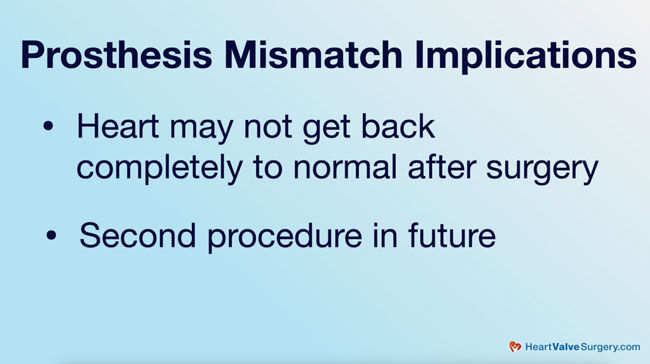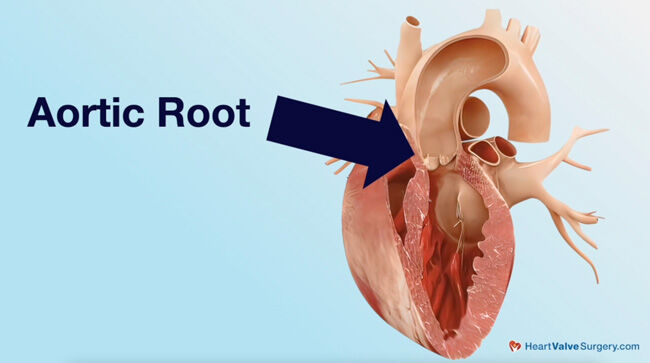Doctor Q&A: How To Avoid Patient Prosthesis Mismatch?
Written By: Andrea Wickstrom, BSN, RN, PHN
Medical Expert: Douglas R. Johnston, MD, Chief of Cardiac Surgery at Northwestern Medicine
Reviewed By: Adam Pick, Patient Advocate
Published: September 26, 2023
We just received an excellent question from Fred about avoiding patient prosthesis mismatch when having an aortic valve replacement. Fred asks, “I need an aortic valve replacement and I have been reading about prosthesis mismatch. What, if anything, can I do to avoid this complication?”
To answer Fred’s question about patient prosthesis mismatch (PPM), we met with Dr. Douglas Johnston, Chief of Cardiac Surgery at Northwestern Medicine in Chicago, Illinois, who has performed thousands of heart valve surgeries and successfully treated many patients in our community including Kim Clemens and James Wright.
Key Learnings About Patient Prothesis Mismatch
Here are important learnings from Dr. Johnston about patient prosthesis mismatch:
- Patient Prosthesis Mismatch (PPM) occurs when the inside area of a new surgical valve is too small for the patient in relation to their body size. Like heart valve stenosis, PPM causes increased resistance of blood flowing through the valve.
- Once a valve has been surgically implanted, patients are not necessarily free from future valve problems. Patient prosthesis mismatch can be a complication for patients. Dr. Johnston states, “We understand the long-term implications of a good operation at the right time versus an okay operation that may have an okay result. But, also downstream consequences. One of those complications is patient prosthesis mismatch.”
- A correctly sized valve will enhance blood flow and help prolong the durability of the valve replacement. However, a valve that is too small can cause complications. “If you have moderate patient prosthesis mismatch, it has implications. One is that your heart may not completely get back to normal after surgery because there is still a little bit of pressure across the valve,” states Dr. Johnston. “We make it better but not perfect.”

- Another implication of PPM is that it can affect the ability for patients to have a second valve procedure in the future if needed. For example, a transcatheter aortic valve replacement (TAVR) can be deployed inside a patient’s surgical valve. This is called a “valve-in-valve” procedure. If the initial surgical valve implanted is too small, a TAVR valve-in-valve may not be possible. “The TAVR is going to be even smaller because we’re taking up space inside,” Dr. Johnston continued. “A TAVR implanted in an already small space may severely restrict blood flow through the valve.”

- The annulus is the aortic root’s fibrous ring where the valve base sits. When the diameter of the annulus is small, other surgical strategies are available and need to be considered to create extra space. Fortunately, if the annulus is big, then a large valve can be put in, and there is minimal concern for prosthesis mismatch. Dr. Johnston advises, ”This is a time to take a deep dive with the right surgeon and ask them, ‘What are you going to do about this? How are you going to get me a valve that is big enough for me?’”
- Dr. Johnston gives this important advice to wrap up Fred’s question. “It has to be a conversation between you and your surgeon. There are a lot of strategies, and they depend on your anatomy. Your team should be prepared and already thinking about this issue.” Dr. Johnston recommends that patients know what that strategy is because it not only impacts your first surgery, but also your future.
Thanks Dr. Johnston and Northwestern Medicine!
On behalf of our patient community, many thanks to Dr. Douglas Johnston for sharing his knowledge and expertise about surgical heart valve replacement and avoiding patient prosthesis mismatch. We also thank Northwestern Medicine for continuing to take great care of heart valve patients!
Related Links:
Video Transcript:
Adam Pick: Hi, everybody, it’s Adam with heartvalvesurgery.com, and we are at the Mitral Conclave in New York City. I’m thrilled to be joined by Dr. Doug Johnston, who’s the Chief of Cardiac Surgery at Northwestern Medicine in Chicago, Illinois. Dr. Johnston, thanks so much for being with me today.
Dr. Douglas Johnston: Great to be here, Adam.
Adam Pick: Yeah, so we’re answering some patient questions that are coming in during the conference. This one comes in from Fred. Fred asks, “I need an aortic valve replacement and I have been reading about prosthesis mismatch. What, if anything, can I do do avoid this complication?”
Dr. Douglas Johnston: Well, that is an excellent question, Fred, so this is a topic we talk about a lot these days because I think 20 years ago, people thought if you made it through a valve operation, you’re good. Often the approach from both surgeons and cardiologists was just go about your life. You’re done. Now we understand the long-term implications of a really good operation at the right time verses an okay operation which may have an okay result but have some downstream consequences. One of those things is patient prosthesis mismatch.
What we’re talking about essentially is a valve that’s a little too small for you. That can be extremely small where you might not even feel better after an operation. I think that’s pretty rare these days because people really understand these issues better. If you have moderate patient prosthesis mismatch, it has a few implications. One is that your heart may not get back completely to normal after surgery because there’s still a little bit of pressure across the valve. In particular, this is the case when we talk about aortic valve disease where you start with stenosis, so the valve is narrow. Then we make it better but not perfect.
The other implication, which is very important now, is if we’re thinking about a second procedure down the road, the TAVR, so putting a new valve inside the existing valve. If that valve is too small, the TAVR is going to be even smaller because we’re taking up space inside. Patient prosthesis mismatch is super important to think about. It’s got to be a conversation between you and your surgeon. There are a lot of strategies, and they depend on your anatomy. If you may have a value that’s very narrow but the annulus, the area around the valve is big, so you don’t have to worry about patient prosthesis mismatch. We can put a really big valve in; you’ll be fine.
If you have a small annulus or what’s for the aortic valve called a small root sometimes, we need to use some different strategies. This is a time to take a deep dive with the right surgeon and ask them, what are you going to do about this? How are you going to get me a valve that’s big enough for me?
Adam Pick: So Dr. Johnston, your recommendation for Fred is to be his own advocate and ask these questions to his medical team?
Dr. Johnston: One hundred percent. Your team should be prepared and already thinking about this issue. They may have a plan that seems so seamless that they have already thought about it, but it’s still good to bring it up. You should understand what that strategy is because it impacts not just your operation today but whatever’s going to happen down the road, a very important question and thanks for bringing it up. I know a lot of patients are thinking about this.
Adam Pick: Yeah, Fred, I hope that helped you, and I hope that helped the other members of our community. Dr. Johnston, on behalf of heartvalvesurgery.com and patients all over the world, thanks for all the great things you are doing at Northwestern Medicine in Chicago. Thanks so much for being here today.
Dr. Douglas Johnston: Hey, great talking to you, Adam.






